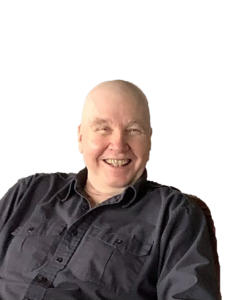Being, Feeling, and Doing Better 3
As many have noted over recent millennia, we humans have a dual nature in the sense that we have access to Being as well as to Becoming. Overcoming this split is being, feeling, and doing better.
Becoming is the temporal domain that is characterized by doing, which is always aimed at gaining, obtaining, or having. It’s the familiar everyday world filled with the hum, buzz, and motion of all the various activities of forms including thought (thinking, conceptualizing).
Being is the nontemporal (eternal, timeless) domain that is characterized by non-doing. It’s the formless world of stillness and silence. It’s the domain of "no-thought". Since there are no forms in Being to single out, it cannot be thought. Despite that, intellectuals persist in making the grave mistake of trying to think their way to Being.
To live exclusively in Becoming is to live in a conceptual prison of our own making. Wisdom requires freedom from all conceptual prisons.
Why?
Since there are no forms in Being, there’s nothing to think in Being and no separation in Being. This is critical because all dissatisfaction requires separation and all separation requires thought. Opening to Being by dropping thought automatically eliminates separation and, so, dissatisfaction. Wisdom is being without dissatisfaction.
The way of nonattachment is the way from Becoming to Being, from personhood to sagehood, from persistent suffering to abiding fulfillment.

Let’s clarify the idea of removing obstructions to Being by dropping thought. Letting go of thinking, detaching from it, releasing it, is the critical skill required to open to Being.
Usually when we think about thinking we think about analyzing, comparing, contrasting, noting similarities and differences, trying to solve problems, and working to improve our conceptual understanding. These are all familiar experiences in Becoming.
When we think, we are using our minds. The noun ‘mind’ comes from the verb ‘(to) mind.’ It’s a perfectly familiar word. “Please mind the baby while I’m gone.” “Mind that you don’t bump your head using those stairs to the basement.” “Did you mind that nobody asked you to the party?”
To mind something is to pay attention to it. Paying attention to something is being conscious of it, being aware of it, being alert about it. So, it’s a mistake to think of a mind as a separate form like a tree or a number; it’s not an individual. Since two or more persons or other kinds of animals may mind something or be conscious of it, even though consciousness is sui generis, it’s usually best to think of it as a quality that some forms (e.g., humans) have and others lack.
There are no different kinds of consciousness. For example, it’s not that visual consciousness is different from tactile consciousness; it’s simply that we may be conscious of visual forms as well as conscious of tactile forms.
Similarly, it’s not that consciousness when we're awake is different from consciousness when we're dreaming; it’s simply that we may be conscious of ordinary perceptual objects as well as imaginary dream objects. In that sense, all episodes of consciousness are similar.
As Meinong argued, they all are characterized by “aboutness” or directedness upon something else. Since nothing else has this quality, consciousness is sui generis.
The only way to single out an episode of consciousness is by referring to what it is about. There’s nothing to an episode of consciousness except its being about something else. [Compare Sartre's Being and Nothingness.]
If you doubt this (and you should question every claim I make!), test it. Let’s suppose that as you're reading this sentence you simultaneously hear a car passing along a road somewhere outside the building where you are. Those are familiar kinds of experiences.
What’s the difference between the visual and the auditory awarenesses? It’s their objects: one is about a visual sentence and the other is about a brief sequence of sounds. How else would it be possible to distinguish those two episodes of consciousness? They are different, but their differences are on the sides of the forms they are about rather than on the consciousness side.
With respect to that auditory example, notice how you didn’t hear the raw or uninterpreted sounds and then classify them as likely coming from a passing car; instead, you heard them as coming from a passing car. It’s important to realize that the ways in which we perceive are almost always contaminated by our beliefs.
In other words, our minds are conditioned by our previous experiences. It’s an important illusion to think that we usually perceive the world and then interpret what we perceive. The common refrain “I’ll believe it when I see it” is backward because what we perceive as adults is conditioned by our understandings, i.e., we perceive what we expect to perceive. We filter our perceptions. Psychological experiments have proven this beyond a reasonable doubt.
This has advantages. It usually makes our actions more efficient. However, it also cuts us off from unconditioned experience and puts a lot of pressure on our beliefs. In that sense, our encounters with reality in Becoming are conditioned, theory-laden.
That’s similar to our ability to think itself. That ability is a great asset. It is, though, an asset that comes with a heavy price.
What’s that? It’s that we overuse it.
Perhaps 80 or 90% of our thoughts are repetitious, useless, and obstructive. Yes, 10 or 20% of them are fresh and helpful; nobody denies that. The problem is that we get stuck in our thoughts. Instead of living life, we tend to try to live it in our heads. This deadens it as well as skews what we experience.
Sages have been telling us this in many different ways for many centuries. One could put it this way: thinking requires content to think about. It’s impossible to think about nothing. What do we think about? Forms, what else?
Are forms in Becoming or Being? They are only in Becoming. Therefore, when thinking, we are not paying attention to formless Being.
We are so attached to thinking that many people seem to believe that thinking is the only way of being conscious, of using our minds. They are Being-blind. Since they don’t “see” it, they assume there’s nothing there.
There are two ways of being conscious, namely, thought and no-thought. Our minds are capable of apprehending both Becoming and Being. It’s possible to be fully alert and aware without thinking.
You’ve likely experienced this yourself. Here are some examples that may be familiar.
You wake up in the morning and enjoy a few moments of no-thought until the usually heavy avalanche of thoughts smothers it.
You are driving down a road visiting a foreign country with which you are unfamiliar. You drive around a bend and suddenly a stunningly beautiful vista opens up before you that sucks all thoughts out of your mind.
You are camping in the wilderness and wake up in the middle of the night because of unfamiliar sounds from outside your tent. You are in the dark and strain to listen attentively fearing it might be a moose, a tiger, or some other dangerous animal. Your whole focus for quite a few seconds is on straining to hear additional heavy footfalls.
In a case like that the intense alertness is accompanied by tension. It's no-thought without any tension that is the topic here.
Even if you have had such experiences, you probably ignored them. You had no idea what they were. You may have filed them in the back of your mind and forgotten them until now.
They may have been glimpses of Being. They are not uncommon. Whether or not you have had any or, if you have, remember having them, spontaneous openings to Being probably occasionally occur to most people.
Let’s consider Being more fully in Part 4.
